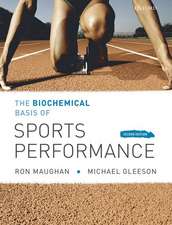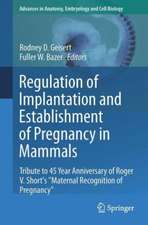Mechanics of Biomaterials: Fundamental Principles for Implant Design: Cambridge Texts in Biomedical Engineering
Autor Lisa A. Pruitt, Ayyana M. Chakravartulaen Limba Engleză Hardback – 19 oct 2011
Din seria Cambridge Texts in Biomedical Engineering
- 5%
 Preț: 397.76 lei
Preț: 397.76 lei - 5%
 Preț: 442.22 lei
Preț: 442.22 lei - 5%
 Preț: 573.97 lei
Preț: 573.97 lei - 5%
 Preț: 409.25 lei
Preț: 409.25 lei - 5%
 Preț: 689.10 lei
Preț: 689.10 lei - 5%
 Preț: 444.06 lei
Preț: 444.06 lei - 5%
 Preț: 522.91 lei
Preț: 522.91 lei - 11%
 Preț: 486.77 lei
Preț: 486.77 lei - 5%
 Preț: 905.93 lei
Preț: 905.93 lei -
 Preț: 441.45 lei
Preț: 441.45 lei - 5%
 Preț: 825.18 lei
Preț: 825.18 lei - 5%
 Preț: 872.98 lei
Preț: 872.98 lei - 5%
 Preț: 841.29 lei
Preț: 841.29 lei - 5%
 Preț: 583.21 lei
Preț: 583.21 lei - 5%
 Preț: 845.07 lei
Preț: 845.07 lei - 11%
 Preț: 606.71 lei
Preț: 606.71 lei - 5%
 Preț: 621.35 lei
Preț: 621.35 lei - 5%
 Preț: 654.54 lei
Preț: 654.54 lei - 5%
 Preț: 484.69 lei
Preț: 484.69 lei - 15%
 Preț: 530.76 lei
Preț: 530.76 lei
Preț: 874.27 lei
Preț vechi: 920.28 lei
-5% Nou
Puncte Express: 1311
Preț estimativ în valută:
167.31€ • 181.68$ • 140.54£
167.31€ • 181.68$ • 140.54£
Carte tipărită la comandă
Livrare economică 22 aprilie-06 mai
Preluare comenzi: 021 569.72.76
Specificații
ISBN-13: 9780521762212
ISBN-10: 0521762219
Pagini: 698
Ilustrații: 375 b/w illus. 35 tables 115 exercises
Dimensiuni: 203 x 254 x 38 mm
Greutate: 1.61 kg
Ediția:New.
Editura: Cambridge University Press
Colecția Cambridge University Press
Seria Cambridge Texts in Biomedical Engineering
Locul publicării:Cambridge, United Kingdom
ISBN-10: 0521762219
Pagini: 698
Ilustrații: 375 b/w illus. 35 tables 115 exercises
Dimensiuni: 203 x 254 x 38 mm
Greutate: 1.61 kg
Ediția:New.
Editura: Cambridge University Press
Colecția Cambridge University Press
Seria Cambridge Texts in Biomedical Engineering
Locul publicării:Cambridge, United Kingdom
Cuprins
Part I. Materials: 1. Biocompatibility, sterilization and materials selection for implant design; 2. Metals for medical implants; 3. Ceramics; 4. Polymers; 5. Mechanical behavior of structural tissues; Part II. Mechanics: 6. Elasticity; 7. Viscoelasticity; 8. Failure theories; 9. Fracture mechanics; 10. Fatigue; 11. Friction, lubrication and wear; Part III. Case Studies: 12. Regulatory affairs and testing; 13. Orthopedics; 14. Cardiovascular devices; 15. Oral and maxillofacial devices; 16. Soft tissue replacements; Appendix A. Selected topics from mechanics of materials; Appendix B. Table of material properties of engineering biomaterials and tissues; Appendix C. Teaching methodologies in biomaterials; Glossary; List of symbols.
Recenzii
'Mechanics of Biomaterials is the textbook I have been waiting for. This comprehensive work synthesizes the science and engineering of biomaterials that has developed over the past three decades into a highly useful textbook for training students … as I reviewed this work it felt like I was reviewing my own lecture notes developed over 20 years. [It] combines materials science, mechanics and medical device design and analysis in a seamless and thorough manner incorporating many critical studies from the literature into a clear and comprehensive work … Pruitt and Chakravartula have succeeded in developing an outstanding text and reference book that should be required reading for all who aspire to design, develop and evaluate medical devices.' Jeremy L. Gilbert, Syracuse University
'… a detailed yet easy-to-read book that can be used by materials scientists and biomedical engineers, from both the budding biomedical engineering student to the seasoned medical device designer. It combines the fundamentals of plastics, metals, and ceramics behavior with the required properties for the often challenging loading and environmental conditions found in the body. I particularly liked Pruitt and Chakravartula's technique of introducing a detailed discussion of the theoretical explanation of a particular material class's response to a loading environment, and then providing a real-life case study demonstrating how the theoretical response translates to clinical performance … The book is rich in practical examples of biomaterials used in permanent implants currently on the market. Sufficient historical information is provided on implant successes and failures to appreciate the challenges for material and design selection in the areas of both hard and soft tissue replacement.' Stephen Spiegelberg, Cambridge Polymer Group, Inc.
'Mechanics of Biomaterials: Fundamental Principles for Implant Design provides a much needed comprehensive resource for engineers, physicians, and implant designers at every level of training and practice. The book includes a historical background which outlines the engineering basis of traditional implant designs, and interactions of materials, biology, and mechanics resulting in clinical success or failure of these devices. Each chapter contains a detailed description of the engineering principles which are critical to understand the mechanical behavior of biomaterials and implants in vivo. The scope of the text covers orthopaedics, cardiovascular devices, dental, and soft tissue implants, and should help considerably in our efforts to improve the function and durability of biomaterials and implants used in clinical practice.' Michael Ries, University of California, San Francisco
'… a detailed yet easy-to-read book that can be used by materials scientists and biomedical engineers, from both the budding biomedical engineering student to the seasoned medical device designer. It combines the fundamentals of plastics, metals, and ceramics behavior with the required properties for the often challenging loading and environmental conditions found in the body. I particularly liked Pruitt and Chakravartula's technique of introducing a detailed discussion of the theoretical explanation of a particular material class's response to a loading environment, and then providing a real-life case study demonstrating how the theoretical response translates to clinical performance … The book is rich in practical examples of biomaterials used in permanent implants currently on the market. Sufficient historical information is provided on implant successes and failures to appreciate the challenges for material and design selection in the areas of both hard and soft tissue replacement.' Stephen Spiegelberg, Cambridge Polymer Group, Inc.
'Mechanics of Biomaterials: Fundamental Principles for Implant Design provides a much needed comprehensive resource for engineers, physicians, and implant designers at every level of training and practice. The book includes a historical background which outlines the engineering basis of traditional implant designs, and interactions of materials, biology, and mechanics resulting in clinical success or failure of these devices. Each chapter contains a detailed description of the engineering principles which are critical to understand the mechanical behavior of biomaterials and implants in vivo. The scope of the text covers orthopaedics, cardiovascular devices, dental, and soft tissue implants, and should help considerably in our efforts to improve the function and durability of biomaterials and implants used in clinical practice.' Michael Ries, University of California, San Francisco
Notă biografică
Descriere
Combining materials science, mechanics, implant design and clinical applications, this self-contained text provides a complete grounding to the field.



























